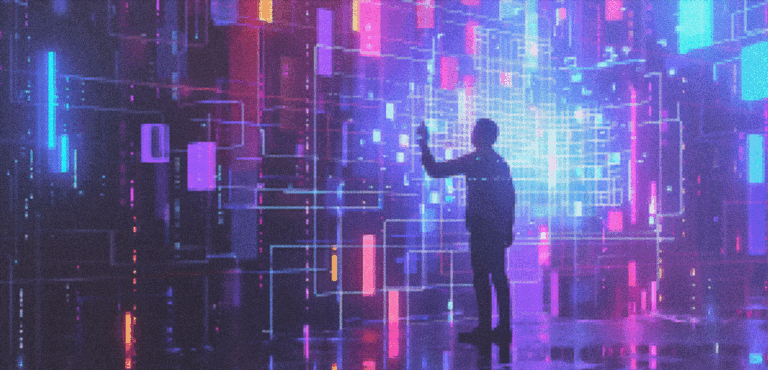
Computex Innovations 2025: Hardware that Redefines Edge AI
Taiwan’s biggest tech showcase returned with a clear message, Computex innovations are redefining where computing happens. GPUs, handheld gaming, and AI wearables took center stage this year.
AMD launched the Radeon AI PRO R9700 with 32GB of memory for local AI workloads. MSI finally abandoned Intel for AMD in its Claw A8 gaming handheld. TECNO, Acer, and Pegatron each revealed AI-powered smart glasses competing for post-smartphone relevance.
The real story of Computex 2025 wasn’t flashy demos; it was where companies are placing bets on the next computing platform: edge AI, local processing, and reduced cloud dependency.
The shift opens new opportunities for professionals who understand infrastructure transitions before they go mainstream.
Are you ready for the next platform race?
GPU silicon gets serious about local AI
AMD’s Radeon AI PRO R9700 targets a key bottleneck, running large AI models entirely in VRAM without relying on system memory. Built on RDNA 4 architecture with 32GB GDDR6, it delivers up to 5× performance over 16GB GPUs in memory-bound workloads.
Intel countered with its Arc Pro B-Series GPUs, offering 24GB and 16GB configurations with XMX AI cores. Both brands are chasing the same market: developers and studios looking to cut cloud costs for AI deployment.
This shift changes deployment economics. Running Llama or DeepSeek models locally becomes realistic without enterprise-grade clusters. It empowers system integrators, developers, and IT teams skilled in local model optimisation and hybrid inference setups.
The catch? AMD’s ROCm still trails NVIDIA’s CUDA. Hardware gains mean little without strong developer support, a lesson AMD keeps relearning.
Handheld gaming’s AMD consolidation
MSI introduced the Claw A8, powered by AMD’s Ryzen Z2 Extreme, joining ASUS’s ROG Ally and Lenovo’s Legion Go in the AMD handheld ecosystem. The switch ends Intel’s brief run inside MSI’s handheld line.
The Claw A8 features an 8-inch Full HD 120Hz display, 24GB RAM, and an 80Wh battery, matching the ROG Ally X. More strikingly, MSI broke the all-black design trend with lime green and white variants, a welcome change in handheld aesthetics.
| Handheld | Processor | Memory | Display | Battery | Availability |
| MSI Claw A8 | AMD Z2 Extreme | 24GB | 8″ 120Hz FHD | 80Wh | TBA 2025 |
| ASUS ROG Ally X | AMD Z1 Extreme | 24GB | 7″ 120Hz FHD | 80Wh | Available |
| Lenovo Legion Go | AMD Z1 Extreme | 16GB | 8.8″ 144Hz | 49.2Wh | Available |
ASUS notably skipped a new ROG Ally this year, letting competitors take early Z2 Extreme headlines. The handheld category is maturing fast, becoming a proving ground for efficient x86 processors, portable productivity, and hybrid OS interfaces.
For professionals, understanding mobile workspace architecture or Windows handheld deployment is quickly becoming a transferable skill beyond gaming.
Computex 2025 AI chips: The edge processing land grab
Beyond graphics cards, AI silicon dominated Computex innovations this year. AMD unveiled the Ryzen Threadripper PRO 9000 WX-Series with 96 cores for local AI training, while ASUS introduced Expert P Series laptops offering over 50 TOPS NPU performance.
Across the board, vendors are racing to own edge AI deployment. Cloud AI ruled the past two years; now, local processing is the new battleground.
For infrastructure professionals, this complicates architecture decisions:
- Which workloads should stay on the cloud versus move on-device?
- How should teams manage model versioning across distributed environments?
Gigabyte’s X3D Turbo Mode 2 even brings AI-driven workload analysis to BIOS-level CPU tuning. Whether these features deliver real value remains to be seen, but the intent is clear: AI is embedding itself in every hardware layer.
AI wearables: Prototype abundance, product scarcity
AI wearables flooded Computex 2025 with announcements heavy on vision but light on shipping dates.
- TECNO AI Glasses: 50MP cameras, real-time translation in 100+ languages, AR overlays.
- Acer FreeSense Ring: titanium smart ring with biometric tracking.
- Acer AI TransBuds: two-way translation across 15 languages.
- Pegatron Verge AR Glasses: 45g AR eyewear powered by Qualcomm AR1 chips.
Yet most won’t ship until late 2025 or slip into 2026. The category remains packed with prototypes and reference designs, not consumer-ready products.
Companies are betting that smart glasses will replace smartphones, but proven use cases remain limited to translation and notifications. For UX designers, product teams, and spatial interface developers, these Computex innovations represent both risk and opportunity.
What the computex innovations actually signal
Computex 2025 innovations confirmed edge AI as the next major infrastructure shift, with every major player claiming their stake. AMD, Intel, and Qualcomm are fragmenting NVIDIA’s dominance by targeting multiple form factors, workstations, consumer PCs, handhelds, and wearables.
The AMD strategy analysis highlighted a persistent challenge: ROCm software support still lags behind AMD’s hardware capabilities. Without ecosystem parity, performance advantages rarely translate to market share. AMD’s announcement of ROCm for Windows in H2 2025 addresses developer pain points, but timing matters when NVIDIA already owns the developer mindshare.
For professionals tracking Computex innovations and their long-term impact, opportunities now cluster around hybrid architectures, understanding which workloads perform best locally versus at cloud scale, managing distributed AI deployments, and designing systems that balance cost with performance. These aren’t just technical choices; they’re strategic business decisions shaping the AI era.
Distilled
Computex 2025 wasn’t about flashy hardware, it revealed where the next computing frontier begins.
- AMD’s Radeon AI PRO R9700 empowers local AI deployment.
- MSI’s Claw A8 strengthens AMD’s hold on handheld performance.
- TECNO, Acer, and Pegatron are racing to define AI wearables for the post-smartphone era.
For technology professionals, the biggest opportunities lie in edge AI architecture, hybrid deployment strategy, and distributed infrastructure management.
The question isn’t whether edge computing will scale, it’s whether professionals are ready to build, optimise, and lead this transition.